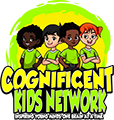Teens, Screens & Loneliness: How to Build Real Connections
Your teen has 500 followers but feels alone in a crowded room. This paradox—digital connection paired with emotional isolation—is one of today’s biggest mental health challenges.
Why More Screen Time ≠ More Connection
Studies show high social media use often increases feelings of:
-
Social comparison (“I’m not good enough”)
-
FOMO (fear of missing out)
-
Surface-level interactions without depth
Signs of Teen Loneliness
-
Pulling back from friends or activities
-
Excessive scrolling without joy
-
Irritability or sadness after screen time
-
Difficulty initiating real-world socializing
Building Belonging at Home
-
Shared family rituals (meals, game nights)
-
Encourage group activities (sports, clubs)
-
Practice gratitude together
-
Teach digital literacy: filter highlight reels from reality
SEL Strategies for Schools
-
Circle discussions for peer empathy
-
Mentorship pairings
-
Journaling and reflection on healthy relationships



